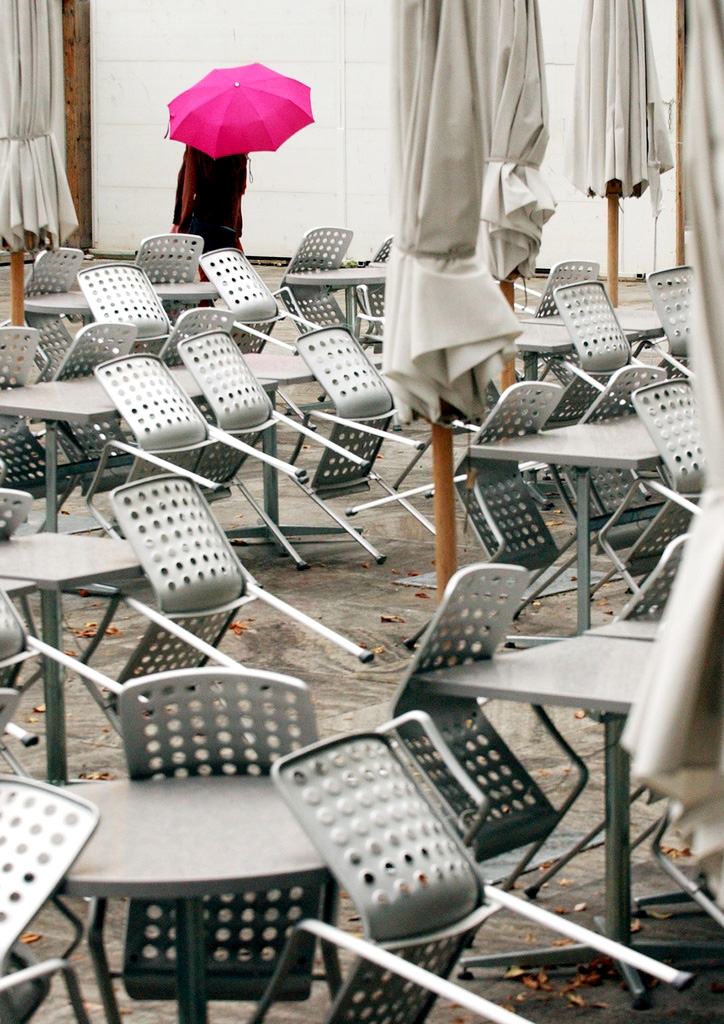Design helps give technology an edge

Young Swiss programmers are at the vanguard of novel technological interfaces. A hands-on approach - led by engineers who are learning to work with designers - is capitalising on the area’s potential and producing adventurous tools.
“We really take the time to think about innovation,” says Laurent Bolli, the founder and director of Bread and Butter, a visual design consultancy in Lausanne that specialises in new interfaces. Bolli trained as an industrial designer at the renowned Lausanne University of Art and Design.
His agency is partnered with OZWE, a software development company founded by Frédéric Kaplan, a researcher in artificial intelligence who was recently appointed the first professor of digital humanities at the Swiss Federal Institute of Technology (EPFL) in Lausanne.
Together they have designed and launched BookApp, which customises content for all web interfaces.
They are currently completing the first digital edition of the entire works of Jean-Jacques Rousseau for the 300th anniversary of the birth of the Swiss-French writer.
“Our semantic approach, which picks up on the occurrences and location of the names in Rousseau’s works, will allow us to reconstruct his social network, just like Facebook does today,” Bolli told swissinfo.ch.
The French newspaper Le Monde has commissioned the team to work on its next digital production, as has the French national library.
“Sign of maturity”
Kaplan’s company is also promoting the first computer without a mouse or keyboard that is commanded by gestures alone.
Bolli and Kaplan also play active roles in the Lift Conference, a yearly tech powwow that is widely recognised as an innovation accelerator since it was set up in Geneva in 2006.
By introducing a better understanding of the social potential of technology to people from all walks of life interested in anticipating trends, and not just geeks, the objective is to “turn change into opportunity”. Many new partnerships have blossomed out of Lift.
“Working with artists is crucial,” Laurent Haug, founder and editorial chair of Lift, told swissinfo.ch. “It is a sign of maturity when we turn to them to help develop our ideas. Their greater mental flexibility can enlarge horizons,” he observed.
Although Lift has included artistic ventures over the years, it is still investigating the best way to inspire joint projects.
User-friendliness
The main academic hubs for computer sciences in Switzerland have also woken up to the need to involve creative agents to obtain better interfaces and products. The Swiss Federal Institute of Technology in Zurich (ETHZ) and Lausanne (EPFL) have several projects in common with art schools (see sidebar).
“One of the mistakes we made when developing Wuala [secure online storage that was acquired by LaCie in 2009] was to focus too much on the technology and not on the design and usability of the product,” admitted Dominik Grolimund, who was at the time a Masters student at ETHZ.
“Some engineers are obsessed with algorithms and rarely consider the user-friendliness of a product,” he said to explain why many start-ups keep piling on additional functionalities, thinking that they are adding value.
“But in the end, it only increases the complexity of the product,” Grolimund insisted.
His first experience allowed him to come to the conclusion that design plays an important part, but he said that it isn’t easy to find someone who is into ‘design thinking’ (see sidebar) and who can follow a project right through from its inception to the customer interface.
Grolimund is happy that one of the co-founders of his second start-up, Silp, a job platform that plucks profiles from the social web to deliver “dream jobs” to the right people, is in fact a designer.
“Because we had a design approach from the very start, our new site is as simple as possible: no complicated interfaces or superfluous functionalities,” he said.
Doodle, in its remarkable simplicity, was a Swiss invention, he pointed out.
“Intense innovation”
Grolimund believes that the introduction of a course on game design at Zurich University of Arts, amongst other similar approaches, can also help improve user interfaces.
Laurent Bolli concurs: “Games are an area of intense innovation, where all the important changes in terms of usability and interface are taking place,” he said.
Although ‘gamification’ (see sidebar) is the new buzz word and considered to be a major avenue of research, Bolli finds it surprising that the vocabulary of movements associated with gaming has not yet been properly established.
Considering that the interaction principles that govern games are highly relevant in all digital fields, albeit without the entertainment component, Bolli salutes the Zurich initiative.
“The key to pioneering successful digital interfaces is to work at the heart of technology and design, together,” he stressed.
“Design thinking”
A term that designates human-centered design, a methodology that focuses on interactivity with customers. It was originally coined at Stanford University and has been taken up by the business schools the world over, including in St Gallen.
“Gamification”
A term that designates the application of game design thinking to non-game applications in order to enhance experiences and increase usability.
Zurich
The Swiss Federal Institute of Technology in Zurich (ETHZ) collaborates with the Zurich University of the Arts, particularly in the field of robotics.
Swiss artists-in-labs is a collaboration between Zurich University of the Arts, the Institute for Cultural Studies in the Arts (ICS) and the Federal Culture Office. Long-term residency programmes for artists in various scientific labs and a series of exhibitions investigate the frontiers between art and science with a view to stimulating design innovation. It is fairly successful, although there is still an aura of mystery around the initiative.
Lausanne
Swiss Federal Institute of Technology Lausanne (EPFL) collaborates with Lausanne University of Art and Design (ECAL) through a joint project:
EPFL+ECAL Lab was created to investigate “a new relationship between engineering and design with innovation as its goal”. It collaborates with various design schools, like the ECAL, Les Ateliers in Paris, the Royal College of Art in London and the California College of the Arts in San Francisco on thematic areas such as materials, augmented reality, human-machine interfaces, the digital production methods, or solar energy.
Geneva
Geneva University of Art and Design has a Masters programme for interaction designers, i.e. the innovative use of technologies (design practices brought about by emerging technologies). It is spawning a new generation of web designers with a distinctive Swiss style.
Lift Conference 2013 will take place on February 6-8, 2013 at the International Conference Centre in Geneva. Smaller yearly editions take place in Korea and Marseilles as well.

In compliance with the JTI standards
More: SWI swissinfo.ch certified by the Journalism Trust Initiative









You can find an overview of ongoing debates with our journalists here . Please join us!
If you want to start a conversation about a topic raised in this article or want to report factual errors, email us at english@swissinfo.ch.